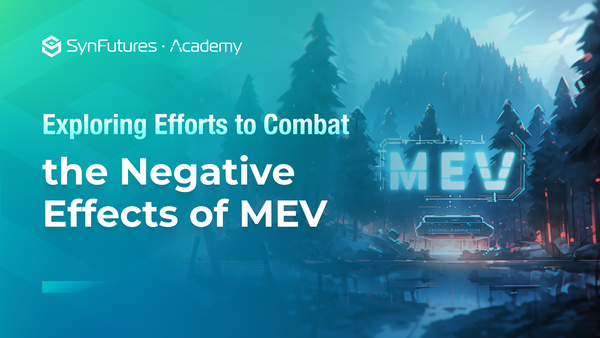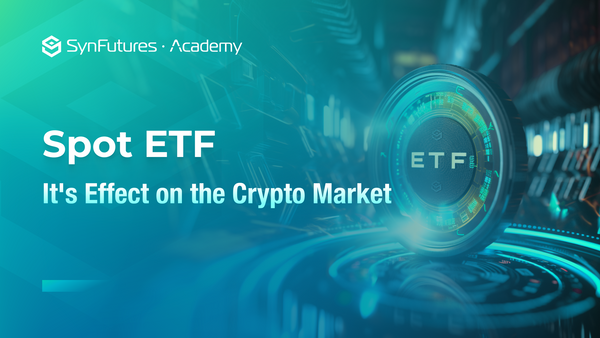An introduction to perpetual swaps
Key takeaways:
- A perpetual swap allows investors to speculate on the future price movement of an underlying assets but lacks a expiration date.
- A perpetual swap uses funding rate mechanism to main the price peg.
- Perpetual swaps are offered in both centralized and decentralized exchanges.
Overview
A perpetual swap, also known as a perpetual futures contract, is similar to a futures contract in that it allows investors to speculate on the future price movements of an underlying asset. The core difference is that a perpetual swap lacks a pre-specified delivery date or the expiration date, and it thus can be held indefinitely without the need to roll over contracts as they approach expiration.
The concept of perpetual swaps was initially proposed by Robert Shiller in 1992. However, they are only developed for cryptocurrencies following their introduction in 2016 by BitMEX. Perpetual swaps are appealing to a wide range of investors, as they allow traders to take on large positions with a small investment. However, the potential for great rewards can come with great risk.
In a futures contract, there is no need to maintain a price peg to the spot price since the value of the contract and underlying automatically converge at the expiration. For a perpetual contract, its price must be anchored to the spot price of its underlying asset since there is no expiration.
To maintain the peg, exchanges implement a price anchoring system called the funding rate mechanism. By incentivizing or penalizing trades, the mechanism balances the short and long positions and therefore keeps the contract price at par with the spot price.
How do funding rates work?
Funding rates are periodic payments made to either long or short traders based on the relative positions of contract prices and spot prices. When the price of a perpetual contract is above the spot price of the underlying asset, the funding rate is positive. In this case, long position holders pay a fee to short position holders. The result of this is that it encourages more short positions and discourages long position holders, and therefore pulls the contract price at par with the spot price.
In contrast, a contract trading below the spot price of its underlying asset has a negative funding rate. Traders holding the short positions would pay traders holding long positions.
The funding rate varies depending on a few factors, such as exchange type, payment interval, the underlying asset, etc. The exact amount paid or received depends on the size of a trader’s position, funding rates, and payment interval. For instance, if the funding rate of a BTC/USDT perpetual swap is -0.010% with a payment interval of eight hours, a trader shorting 50,000 USDT of this perpetual swap would have to pay a fee of 5 USDT to traders longing the pair for this payment interval. The 5 USDT comes from multiplying 50,000 USDT with 0.010%. The total amount of fee received or paid is the sum of all the fees while holding the position.
How does a perpetual swap work?
Let’s use an example to explain how a perpetual swap works exactly. Alice longs 1 BTC/USDT perpetual swap at the price of 50,000. She deposited 50,000 USDT as collateral. When the price of BTC/USDT rises abruptly to 60,000 exactly one day later, Alice decides to close her position and lock in the profit. If not considering the funding rates during her trading time, Alice would have generated a 10,000 USDT profit.
profit = (current price – entry price) x quantity of contracts
= (60,000 – 50,000) x 1
= 10,000 USDT
Suppose during Alice’s trading, the funding rate of BTC/USDT stays at +0.010% the whole time (In reality, this is very unlikely.), and the payment interval is eight hours. That means Alice would have to pay the fee to short position holders every eight hours. For the one-day trading, Alice pays the fee three times. Assume for the first two eight hours, BTC/USDT price stays steady at 50,000, then suddenly jumps to 60,000 and stays steady at 60,000 for the rest of the last eight hours. The fees Alice pays for each payment interval is:
First payment interval = 50,000 x 0.010% = 5 USDT
Second payment interval = 50,000 x 0.010% = 5 USDT
Third payment interval = 60,000 x 0.010% = 6 USDT
And the total fee Alice pays is:
total payment = sum of all payments = 5 + 5 + 6 = 16 USDT
The actual profit that Alice can lock-in should deduct the fee payment for holding the position.
locked-in profit = profit – total payment = 10,000 -16 = 9,984 USDT
In the above example, Alice does not take advantage of the leverage opportunities available to perpetual swaps. To apply leverage to her trade, Alice could deposit less USDT as margin or increase the number of contracts she longs. For example, to apply a 10x leverage, Alice buys 10 BTC/USDT perpetual swaps with the same amount of margin. With the same assumption with the above example, when Alice closes her position one day later, the profit she would lock-in is ten times or 99,840 USDT.
Interestingly, some exchanges allow traders to access up to 125x leverage. This gives the traders the opportunity to amplify profit. However, please note, high leverages also amplify losses.
For our example, using a 10x leverage exposes Alice to liquidation risk if the price of the contract falls by 10% to 45,000.
profit = (current price – entry price) x quantity of contracts
= (45,000 – 50,000) x 10
= -50,000 USDT
Alice has the risk of losing the entirety of her 50,000 USDT initial collateral.
Therefore, the risk that comes with leveraged trading is significant and should not be attempted by new traders.
Where to trade perpetual swaps?
Perpetual swaps are available to trade through both centralized and decentralized derivative exchanges. Centralized exchanges include Deribit, BitMEX, Binance , and FTX, and major decentralized exchanges include dydx and Perpetual Protocol. Increasingly, exchanges that offer traditional futures exchange are expanding into perpetual, such as SynFutures. SynFutures is developing its next version which has perpetual contracts as part of the product vision.
Every exchange offers slightly different perpetual swaps. Below is a summary of the funding rate system of some major exchanges. Users should select the exchange to their preference after doing their own research.
Exchange | Funding Interval | Settlement | Payment Time | Interest Rate | Clamp |
BitMEX | 8 hours | UTC 4, 12, 20 | 8 hours after settlement | 0.010% per 8 hours | [-5, 5] |
Binance | Every 8 hours | UTC 0, 8, 16 | 8 hours after settlement | 0.010% per 8 hours 0 for BNB, LINK, and LTC | [-5, 5] |
FTX | 1 hour | hourly | at settlement | 0 | n/a |
Deribit | 1 millisecond | millisecondly | Real time | 0 | [-5, 5] |
dydx | 1 hour | hourly | at settlement | 0.010% per 8 hrs | n/a |
Perpetual Protocol | 1 hour | hourly | at settlement | 0 | n/a |
Please note the funding rate calculation varies with different exchanges. Interest rate and clamp data are provided here for comparison only. As the funding rate is closely related to these two data sets, please make sure you understand how the funding rate is calculated with different exchanges before referring to this data.
Closing
Trading perpetual swaps is appealing because they allow traders to speculate on the price movement of digital assets without time constraints. However, it is also highly risky, especially when leverages are applied. With high-frequency funding payments, it is possible that the funding payments outweigh the gains of a trade or put the trade at further risk. It is important for traders to perform their own due diligence before getting their hands dirty in perpetual swaps.
Want to learn more about trading fungible assets or listing your own contracts? Try out our Crypto Futures feature now in beta.
Disclaimer: SynFutures Academy does not guarantee the reliability of the site content and shall not be held liable for any errors, omissions, or inaccuracies. The opinions and views expressed in any SynFutures Academy article are solely those of the author(s) and do not reflect the opinions of SynFutures. The SynFutures Academy articles are for educational purposes or information only. SynFutures Academy has no relationship to the projects mentioned in the articles except for SynFutures, and there is no endorsement for these projects. The information provided on the site does not constitute an endorsement of any of the products and services discussed or investment, financial, or trading advice. A qualified professional should be consulted prior to making financial decisions.




